This is not on any map: A letter from Brion Eriksen
Posted by: Brion EriksenWe’re all in this together … no matter where “this” is.
If you’ve clicked on this post, you’re probably one of our clients or colleagues, (also known collectively as our friends). If you’re a “new” friend, thank you for clicking! I’m the founder and owner of Elexicon. I can’t believe it’s been over three weeks since that Monday in mid-March when we all returned to work from the weekend, for the most part via webcam from our home offices. The COVID-19 crisis arrived so quickly, and now does not appear to be leaving any time soon — like it’s moving in fast-forward and slow-motion at the same time … such a strange time. We’re all in uncharted territory without a map, as parents of children, as children of older adults, and as professionals and business owners.
From my point of view of being a small business owner, I wanted to give you an update on what we’re doing and how we’re doing, now that I have a few weeks of perspective. At Elexicon we’re doing our part to social-distance, we continue helping our clients, and we stand at the ready to help more. We’re especially thankful for the health care workers who are on the front lines of the battlefield for us. They inspire us every day.
Work and the office
We moved into a new office in downtown Grand Rapids in December, and we’re located just above the row of restaurants, a coffee shop, bars and a microbrewery on Ionia Avenue. It’s been sad and surreal to see the once-bustling street go quiet, and those great new neighbors that we were just beginning to get to know need to close down. We’re looking forward to hearing the muffled sound of voices and music from HopCat below us, and the shouts and honks from the street outside again soon. Now that we’re settled in, we might otherwise be planning an open house right now that would spill down into visiting you all, as well. We wish everyone the best.

Our new office is smaller than our previous home base, a decision we made because our team had become a hybrid of office- and home-based workers. Some were in the office all the time, some worked from home most of the time, and some had a mixed schedule. As a result, the all-work-from-home approach for Elexicon has been a smooth transition. Our work continues, perhaps not quite business-as-usual, but let’s call it business-as-unusual.
Our clients
The COVID-19 crisis has impacted our clients in different ways. I won’t go into much detail about who they are or specifically how they were affected, but our clients are generally falling into three categories of impact. We’ve had a small handful of great clients who unfortunately were abruptly impacted, each in their unique way, by the cancellations and postponements of live events. We’re already seeing them improvise their offerings into the virtual space, but they have understandably needed to scale back their work with us on digital services and marketing.
For businesses like these, we’re advising them to stay visible through their own communication channels and remain on the minds of customers and prospects. Online events are a great idea, even if they are no substitute for the live alternative. Another activity to consider may be easier said than done with so many other stresses and concerns on your mind, but organizing your thoughts into occasional social media, video or blog posts may be therapeutic, as well as helpful to organizing wrapping your mind around your business’ return plan.
Smaller businesses may need to adapt and become something different when you re-emerge, but stay focused on returning. Get creative, rediscover that passion … this crisis doesn’t change the fact that you’re an entrepreneur and survival is in your DNA.
Healthcare
As many of you know, we have several healthcare clients, as well. I mentioned above how thankful we are for the front-line caregivers, and we’ve also been unsurprisingly impressed with our client colleagues in the digital and communications departments. Michigan communities are getting concise and transparent information from their healthcare organizations, about an ever-changing medical crisis that can otherwise be frightening and confusing. We’ve been proud to simply have the opportunity to be called upon here and pulled in there to help support these monumental efforts for some of the best of those organizations. We’re also glad to see some of the digital communication platforms we’ve built get called into a new level of service to inform the community.
These clients have truly risen to the moment and were well prepared (even for this), so our only advice to them has been to keep up the awesome work, while proactively sharing creative ideas and keeping technical platforms running smoothly. Simple, direct, transparent and clear communications are such an important resource to communities that are stressed, scared, and otherwise confused by the barrage of information overload and noise they’re receiving from elsewhere.
Homebound sales
A third category consists of midsize and large companies who have been, for the most part, weathering the storm over the past month, aside from adjusting to their significant transitions to a remote workforce. One impact on the sales and marketing front has been — and will continue to be — travel restrictions and trade event cancellations. We’re working with some of these clients — and would advise any business that falls into this category — to develop alternate strategies for using digital communications and channels to demonstrate their products and services, from videos and explainer animations to mobile apps and “virtual” showrooms. This crisis won’t be an extinction-level event for trade shows, but they may never be the same, so there’s no better time than now to plan alternative strategies to trade shows, conferences, and seminars. We recommend thinking outside the box of Zoom events and webinars to really stand out.
Redrawing the maps
I will expand on some of the thoughts above, as they relate to what lies ahead of us in the coming year as the “new normal,” in some upcoming blog posts. In January we all held our own maps to navigate the landscape that lay ahead of us in 2020. Now that landscape has drastically changed, and those maps suddenly would get us lost. We need to quickly and decisively understand the new landscape, and draw new maps. As expert digital strategists, communicators, designers, developers and marketers, that’s what Elexicon does, has done before, and will be here to do it again: Understand new landscapes of business opportunities, and draw new maps to find them, together.
Stay safe, everyone,
Brion
“The best of our energies and skills…”
Posted by: Brion EriksenRevisiting inspirational quotes and speeches during these times? JFK’s “go to the moon” speech is a good one—especially the less-famous part of its most quoted sentence.
- An insightful presenter at a conference I attended a couple years ago drew my attention to this part of JFK’s speech.
Before I share my thoughts about an inspiring speech from 57 years ago, I’d like to thank all the medical professionals and caregivers who are on the front lines of this health crisis right now and truly inspiring us every day.
“We choose to go to the moon in this decade and do the other things, not because they are easy, but because they are hard, because that goal will serve to organize and measure the best of our energies and skills.” — President John F. Kennedy, Address at Rice University on the Nation’s Space Effort, September 12, 1962
The first half of that quote gets printed onto motivational posters and placards, and is the oft-used sound bite in archival footage of President Kennedy, standing before a large crowd in Houston. I personally have always liked the second part, though. I interpret JFK’s words as stating that while the destination is putting a man on the moon, the journey to get there—to create, to innovate, to find bold solutions to new problems—is what will truly benefit the nation in the long term.
A few sentences later Kennedy inserts a mention of “winning,” and the fact that the U.S. did beat the U.S.S.R. to the moon in 1969 was a point of national pride. But the collaboration—the “meeting of the minds”—of the best entrepreneurs, experts, scientists and engineers led to a new era of technological advancements in health care, public safety, transportation, computing and more. And the journey that began with that speech still has not ended. To borrow another iconic quote from these events, the “giant leap for mankind.”
A thought for these times
I’m reminded of how we are now being forced to organize and measure the best of our energies and skills today, amidst the COVID-19 pandemic. While we as a nation did not “decide” to take this journey, and perhaps we were instead un-prepared in many ways, I think it’s important to remember that we as Americans and as humans are capable of re-inventing the world as we know it for the better.
Sometimes we are challenged to do so, like emerging mere decades after World War II with not only a powerful, greatest-nation-on-earth United States but also a rebuilt and productive Europe and Japan. Other times governments or entrepreneurs set a goal, like someday relying completely on autonomous vehicles to save time, lives and natural resources. I’ve been a skeptic of when and if a driverless society will happen, but I am very certain that the energies and skills involved in that quest have already led to safer vehicles today.
Now we face a new challenge, and this health and financial crisis may be the biggest we’ve seen as a nation and as a global community. On March 20, 2020 these events seem scarier than any world war or terrorist attack. We’re all looking for reassurance, and my article here can’t give you a whole lot of that. All I do offer to those who are reading this is a reminder that the United States has shown a great tendency for collaborating and innovating toward a long-term goal, with a complete acceptance that the journey to that goal will require a lot of hard work and heartache. Another passage just a bit later in Kennedy’s speech:
“We ask God’s blessing on the most hazardous, and dangerous, and greatest adventure on which man has ever embarked.”
We need to control the spread of, treat, and find a vaccine for COVID-19, that is no doubt the goal. And we must organize the best of all our skills and energies for the journey toward that goal and beyond. We can find better ways to minimize and control viruses. We can discover effective new ways to travel, educate and work, even as we return to our old airports, schools and offices. We can re-invent logistics and the supply chain. We can improve how we care for our elderly and protect our children. These are unprecedented times that will require unprecedented vision and innovation, and these qualities are embedded in our nation’s DNA.
When social distancing ends, we can also end cultural and political distancing. We can emerge from this less divided, and more whole. The years since our last all-encompassing crisis in 2008 have also been among our most divisive culturally and politically. But now it’s time to re-examine our shared DNA, to re-discover who we really are—a nation built on one moon shot after another.
Knowledge is power
Posted by: Matt SalerHow Elexicon helps our clients empower their customers with the knowledge they need to accomplish their goals
I recently heard Elexicon’s Creative Director Mike VerStrat cite the aphorism “knowledge is power” to distill the essence of how we add value for our clients. He pointed out that our work is fundamentally about helping our clients organize, optimize, and deliver knowledge for their customers.
The last part of that phrase got me thinking—something like “knowledge … is power … power … energy … knowledge is energy? We’re an energy company (but not that one).” YMMV, but that’s where my mind went. So.
The Energy Business
Energy companies are in the generation and transmission business. The same is true for Elexicon. You want the knowledge you’re developing, organizing, and delivering to act like a sort of energy, galvanizing your customers to make a purchase or set an appointment or otherwise use your product or service. We can help with that. We also deal in a kind of infrastructure maintenance to support both generation and transmission.
Generation
In the context of a website, content is electricity—it’s necessary for the site to run. And as in regular life, the source of the electricity matters. Is it cheaply produced but toxic in the long run like a spewing well of crude oil? Or is it carefully adapted to the need and sustainable like a wind turbine off a windy shore? Is the byproduct of its production going to pollute the surrounding air and blunt the cognition of its users? Or is it suited to the local topography and prevailing winds, enabling fresh air for smooth comprehension? Elexicon strives for the latter in both cases.
We could help a client get up and running with cheap fuel, but the long-term damage that can do to a brand is never worth it. We’d rather carefully sight out the project and craft an energy solution that is suited to the landscape.
The most important thing in this context is that the customer gets what they need and feels good about the source. Our content services, including strategy, writing, editing, and management, ensure you deliver clean energy to your customers regardless of medium.
Transmission
Energy is no good to anybody if it’s not transmitted where it’s needed, when it’s needed. We understand that. We build delivery systems that get your knowledge where it needs to be, whether on a website, social media platform, trade show booth, or executive report—when it needs to be there.
We can redo your existing wires with a website overhaul or just update them to get up-to-speed with a rebrand. And if the need is an all-new hookup in the form of a spin-off brand or product launch, we’re there too. Whether the infrastructure already exists or needs to be built from scratch, our branding, strategy, design, development services can make sure your project connects.
The Grid
The real life Grid is a hodgepodge network that requires constant upkeep to avoid a system-wide shutdown. It’s in desperate need of modernization. Elexicon’s energy production and delivery systems are held together with more than duct tape and chicken wire. We use modern frameworks that lay down a strong foundation, enabling simpler upkeep and reduced reliance on costly workarounds. And we work with reliable, stable hosts that help us avoid systemic risks analogous to power lines perilously close to tree branches. But if a tree branch falls on a line on a unusually windy day, we’re there to repair the line and restore service.
A bit of a sidenote while on this topic: in terms of real life energy used, we strive to ensure the work we do is lean and makes efficient use of the world’s energy while directing our customers to responsible hosts.
Reducing Energy Loss
Another feature of the real life energy grid is energy loss due to transmission over long distances and at various points from generation to point of service. For our purposes, this translates to anything that increases bounce rates, prevents user action, and, in most cases, reduces time on site. We work to avoid energy leeches in our work, working hard at optimization to enable your users to feed off the energy you produce, interacting with or reacting to it—even adding to it via social media or user-created content.
Power to the People
The phrase “knowledge is power” is a translation from the Latin “scientia potentia est,” where “potentia” is “power.” Without getting too deep into the muck trying to be cool with root words, it’s worth noting the connection to the English word “potential.” Knowledge begins as potential. We can help you make it more than that.
Whatever product or service you offer, you want to enable customers to do something. Like a real energy company, that’s our goal too. We enable you to empower your customers with the knowledge they need to accomplish their goals through your product or service.
What can we help you power?
Case Study: Health Beat
Posted by: Brion EriksenHow being their own publisher helps Spectrum Health tell its stories from the “inside out.”
Elexicon is proud to have helped Spectrum Health plan, design, and build their news and information web site, Health Beat. Produced and managed by editor in chief Cheryl Welch and her talented team, Health Beat is actually much more than a “news site.” Spectrum Health’s marketing communications leadership intentionally took a brand journalism approach when we helped develop the content strategy in 2015, taking the writing, reporting, photography and video to a higher level of professionalism and storytelling. Health Beat serves as a trusted platform for Spectrum Health’s voices: Their leadership, their doctors and caregivers, and (especially) the stories of patients.
Storytelling from the inside out
Every day, Health Beat delivers expertly written and photographed stories about what is happening at Spectrum Health, including medical breakthroughs and health and wellness information. Many of these stories are driven by the latest health-related national and global headlines, providing Spectrum Health’s expert insights, and reporting on local impacts. However, that core mission—its gift—is its genuinely authentic, this-is-real-life approach to telling patient stories. Many of the articles have joyful happy endings, but others capture an ongoing fight for life, or a raw, emotional struggle for which the outcome is still undetermined. Health Beat’s storytellers passionately craft words and pictures to represent these lives with dignity and beauty.
A highlights video Elexicon produced for Health Beat that captures it essence, with several article highlights from 2018.
One example that truly touched our team a few years ago still stands out. There was a series of Health Beat articles written about a young husband and father who was battling terminal brain cancer. Each article documented a stage of his journey, from participating in an experimental drug trial to taking a last vacation, then finally a reflection and photo tribute after his passing. His family asked the Health Beat team to provide printouts of all the articles so they could be displayed and shared at his funeral. We don’t often find ourselves getting emotional over an e-mail request from a client to help with some web-to-pdf formatting.

That story captures the beauty of Health Beat: Going deeper than surface-level branding, marketing, advertising and P.R., and into storytelling that enables empathy, captures humanity, and delivers inspiration. Some readers may have a loved one suffering from a particular condition, and through Google-search they find a Health Beat article about a patient with the same condition. The journalistic storytelling provides another helpful layer of information, about what it’s like, what to expect, and how to manage it both physically and emotionally. Other readers may just be having a bad day and click on a social media link to a Health Beat article, and be inspired and uplifted (and entertained!) by someone like the beautiful Candus Jones.

Earning, building and embodying trust
If you were not familiar with Health Beat before, one of your first questions at this point might be: What about privacy? The subjects of these stories, the patients and their families, are often in the midst the most vulnerable moments of their lives when Health Beat produces a story about them!
That’s where trust comes into play. The patients and families trust their doctors and Spectrum Health, and Health Beat has become a trusted extension of the institution: Trusted by Spectrum Health leadership, by the health system’s medical experts, and by the patients.
The Health Beat team has earned this trust in several ways:
- Professionalism Cheryl is a seasoned professional journalist with a deep experience leading a traditional newsroom; and the team also includes fellow professionals, writer Sue Thoms and photographer Chris Clark. Given this background and award-winning talent, the team conducts their work at the highest level of ethics and discretion that you would expect.
- Passion The Health Beat team’s passion for their journalistic craft is apparent in everything they do, from their respectful interactions with patients and families to their unyielding reliance on medical expert approval before any story gets published. Patients and families are treated like the amazing stars of these stories that they are.
- Quality Tied directly to the team’s professionalism and passion, the quality of the content output is professional-grade stuff: Spend some time browsing Health Beat and you’ll feel like you’re reading a major publication with spectacular photography and heartfelt storytelling.
The bottom line: This isn’t advertising or promotion. Doctors, patients and families can trust that their story will be told with respect and dignity. Health Beat writers and photographers are even invited all the way into operating and recovery rooms to chronicle the breadth and depth of the story. The families do this for the greater good of educating and inspiring their community—but it also feels good to have you story told sometimes, doesn’t it? Especially by such pros?

Something special
The embodiment of the trust that a thoughtful brand journalism strategy can build is Health Beat’s “Special Series.” While the majority of patient stories are stand-alone profiles, some families’ journeys cannot be wrapped up in a single article. Instead, some families trust Health Beat to document their entire journey. We saw it earlier in the request for all that young man’s Health Beat articles to be part of his life tribute.
We also see it in “Life for Lilly,” a series that chronicled the story of Lilly Vanden Bosch, a 10-year-old girl with a rare autoimmune disorder known as aplastic anemia. For any family and child who might also have this or a similar condition come into their lives, Health Beat and the VandenBosch family documented an informative and inspiring story for them to experience: The radiation treatments, the bone marrow transplants, how there will be tears and sometimes danger, but also how much fun and joy and laughter can remain part of the process.

A foundational communication channel
Since launching, Health Beat has been a best-practices standard-bearer for brand journalism in health care. The publication has won over 125 content marketing and P.R. awards for excellence, within the health care industry and beyond. (In fact, in 2018 Health Beat topped Microsoft’s Story Lab brand journalism effort for P.R. Daily’s Content Marketing Awards “best of show” web site!) In addition, the site has grown its audience exponentially over the years, and has developed a loyal following through e-mail subscribers and social media followers. Health Beat has become a trusted institution in Spectrum Health’s home region of West Michigan, and has also extended its significant reach to a national and worldwide audience.
As critical institutions of their communities, every health care system needs a communications mix of of media relations and community relations, of brand advertising and earned media, and of course crisis communications, especially in times like we’re seeing in 2020. But Health Beat proves that brand journalism should be an important communication channel in health care content strategy as well—In fact, a brand journalism channel can drive the content strategy. You see, Health Beat has become more and more trusted and popular year after year, for many of the reasons we already mentioned above: A commitment to the highest standards for telling stories of real life struggles and triumphs. Brand journalism can serve as an effective vanguard for flowing all of your other channels of communication into your digital ecosystem. (It doesn’t hurt that Health Beat has seen 1.2 million visitors in the past 12 months.)
A ‘mighty’ impact
No profile of Health Beat would be complete without the story of ‘Mighty Boy’ Elijah. A Google search by Elijah’s parents found a Health Beat article, setting off a series of events that saved the child’s life.
Powerful stuff, and a great example of what’s possible with brand journalism, especially in the health care space, where there are not only so many inspiring stories to tell, but also such a wellspring of important information that needs to be communicated in a professional, trusted forum.
Hey … was this supposed to be an Elexicon case study?
Well, thank you for asking 🙂 We’re such big fans of Health Beat here at Elexicon, we really like to focus most of the credit for its success to its editorial team and the doctors and leadership teams that support it. But if you must know, we’re also pretty proud of the work we put into Health Beat, as well:
- Content Strategy We helped Spectrum Health develop the content strategy framework for their web site and digital asset management system, that laid the groundwork for what content assets could comprise this new “Content Hub,” as they initially called Health Beat. Props to Jill Seidelman, Health Beat’s digital marketing manager, for working alongside us during those months to make Health Beat come to life.
- Design We designed the brand creative and user experience of the initial site that was launched in 2015 and the 2018 re-design. Our designers established Health Beat’s user-friendly, inviting aesthetic across all devices. 75% of Health Beat’s traffic arrives via mobile phones and tablets. Our creatives have also designed many of the infographics featured on Health Beat.
- Development We built a completely custom, enterprise-class WordPress platform that enables a robust editorial workflow on par with many far more complex and expensive content management systems. Editors and writers can obtain reviews and approvals from patients’ physicians and other health experts, and ensure the content is securely and completely vetted without causing any backlogs or bottlenecks.
- Third-party Integration We made building weekly, monthly, and special-edition SalesForce e-mails from the content easy, and the system can also pull stories out of the content management system and display selections of them throughout the hospital system facilities on their digital signage.
- Social Media Engagement was a priority, so we build our own custom engagement-counter plug-in to display how many likes, shares and comments each story is receiving.
- Web Site Maintenance We built a rock-solid web site platform that, in the words of the old Timex slogan, “takes a licking and keeps on ticking.” The Health Beat team drives multiple story drafts, story reviews, story publications, photo galleries, videos, comments, and content feeds through the system on a daily basis. We continue to maintain the security and performance of the site, while the Health Beat team goes about all this business without needing much help from us. That’s the way we think it should be.
A growing trend over the past decade, whose time has now truly come
A brand journalism approach is an excellent strategy for maximizing the ROI of all your company’s content, by boosting visitor traffic, driving engagement, and supercharging the goodwill of your brand. As Health Beat has demonstrated, this is especially true for health care organizations, whose communications are so critical to the community, and there are so many awesome stories to tell. Also consider:
- Health-related internet use has become one of the Top 3 online activities in the world. More than 100 million Americans visit health-related sites regularly, according to eConsultancy, and these figures were derived well before COVID-19. Think about how you want your stories to be front and center in these searches and activities, especially with your local community and consumers.
- 77% of patients Google information about a health care provider before making an appointment at that provider, according to Content Marketing Institute. A brand journalism site like Health Beat can provide a deep and broad picture of your services, expertise, and patient experience that basic brochure-ware web content never could.
- According to Social Media Today, 80% of decision-makers prefer to access company information via a series of articles rather than advertisements, and 70% said content marketing made them feel closer to the brand. A well-told story provides more long-term brand value than even a well-placed ad.
Interested in Brand Journalism? We can help, with proven strategies and technical platforms. Contact us for a free 30-minute consultation today.
Starting with “Why”: We Make Things Clear
Posted by: Brion EriksenA few years ago I decided that Elexicon needed to re-focus as an agency. I felt like we were drifting a bit, and lacking direction … and that started at the top, with me. Without going into much “inside baseball,” we spent some valuable time that summer of 2014 in weekly meetings where we discussed a range of different topics: Our history, my vision for starting the business, pinpointing what we’re really good at, and identifying what we might not be as good at. We looked at some of the classic wisdom and models for increasing effectiveness and productivity, such as Stephen Covey’s Seven Habits and the Eisenhower Matrix, along with devising some thought exercises of our own.
Another source of inspiration for our meetings was Simon Sinek’s book Start With Why, and his highly popular TED Talk of the same title. The book’s subtitle is “How Great Leaders Inspire Everyone to Take Action” and its premise is that leaders inspire by discovering and defining the “Why” of their team or organization’s work. Sinek wants us to focus on Why we do the work that we do, and make that the foundation of How we do our work and What we ultimately produce. Since the TED Talk was made way back in 2009, I’m sure many of you reading this have probably seen or heard of the “Start With Why” model and watched the talk. If not, I recommend this 20 minutes of viewing…
Now that everyone has at least seen the video, I will say that Start With Why isn’t a panacea or magic bullet. The “Golden Circle” does not apply to everyone and everything, but I do think it’s a valuable concept to consider and a worthy exercise to go through in most cases, as we do in many of our client strategy sessions.
So, I started to relate the Golden Circle concept to our work at Elexicon. From the start, it was very useful in helping me not only think about the “Why” I started the business in 1999, but also Why our team and I were passionate about our work 15 years later. The next question: Was the “Why” the same as it was in the beginning? For the most part, I thought so … which was reassuring: The firm I envisioned had become a reality — with the caveat that at that particular point in our history we were wavering from that original vision.
The D.N.A. of “Why”
Entrepreneurs start their business for a variety of different reasons, but their motivations usually involve: a.) Doing something they’re good at and passionate about; or b.) A great new idea for a product or service that they feel has a chance to get first-to-market. More often than not, the business vision is a mix of both. For me, it was mostly “a” with a little bit of “b.” My education and career path in the 90’s aligned well with a burgeoning new field called “web design.”
- I earned my degree in Technical Communication, with a specialization in Technical Illustration.
- My first job was with an agency called (appropriately) Technical Marketing, Inc., as a technical writer. I primarily wrote assembly instructions and user guides for office furniture.
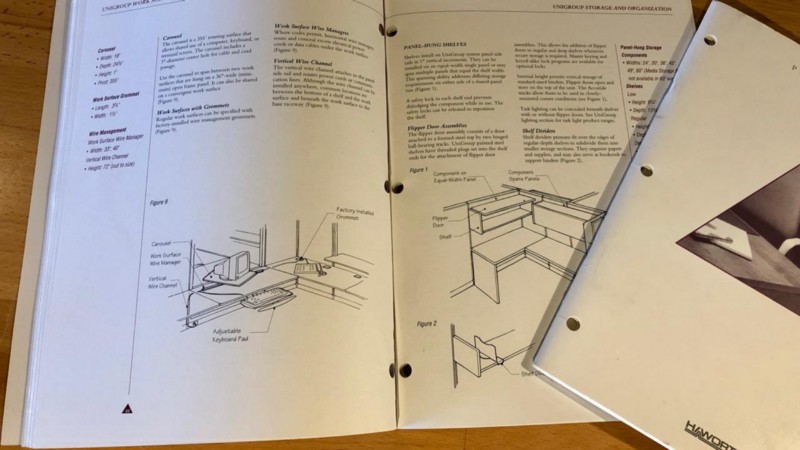
My second job started out as a technical writer tole that expanded to also include graphic design, illustration, and U.I. design for a manufacturer of color quality control instruments and software called X-Rite. I wrote and designed guides to help their users understand the basics of color science (and how to use their products), helped design their software interfaces, and wrote software Help systems in HTML.
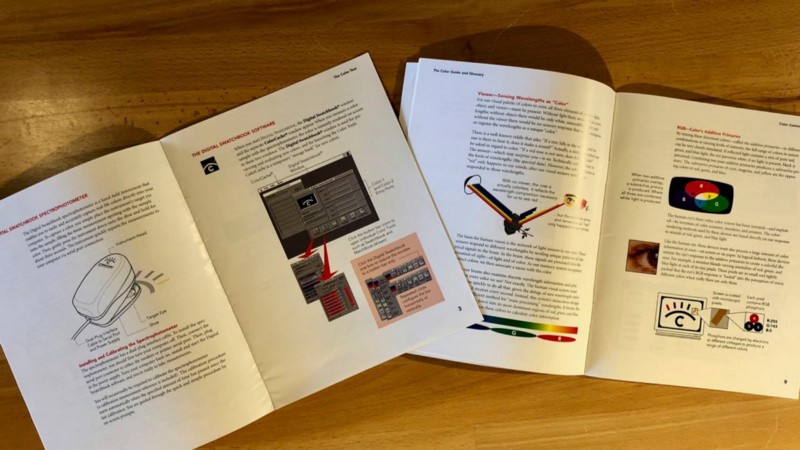
The next role in my career was marketing manger for a small software company, CCMS Inc., where I wore all of the above hats: Writer and designer of their technical and marketing communications; their print materials and their software Help systems.
Then … this software company needed a web site.
More building blocks
I loved working with all of these skills, especially when I was able to “multi-task:” When I was able to write, design and illustrate a manual for X-Rite, or write and program a Help system for CCMS. And the common thread through all of these projects was that I got to explain how things work with words and pictures, and organize all of this information with hierarchy and taxonomy, with typography and hyperlinks.
I quickly moved from learning how to build my employer’s web site to picking up freelance web site projects to deciding that I wanted to design as many web sites as possible. As I absorbed as much information as possible about how to create great web sites, I soon found my brethren in the vanguard of this burgeoning new industry: The information architects, the usability experts and user interface designers — professionals who blended technical savvy with written and visual creativity into “information expertise.”
The Information Architects
Richard Saul Wurman’s iconic “Information Architects” book defined a new discipline that had already existed when it was published in 1996, but didn’t have a name. But with this seminal work, boy did “I.A.” have an identity now, serendipitously arriving at the dawn of the World Wide Web when it could branch into a whole new frontier. Wurman profiles designers of print and environmental information systems, as well as interactive designers and their work in the adjoining years of the CD-ROM and Internet eras, such as Clement Mok and Nathan Shedroff. But there is no question that Wurman — previously a “traditional” architect by trade — is the godfather of the discipline himself. (Wurman would go on to found the TED conferences that continue to thrive today.)
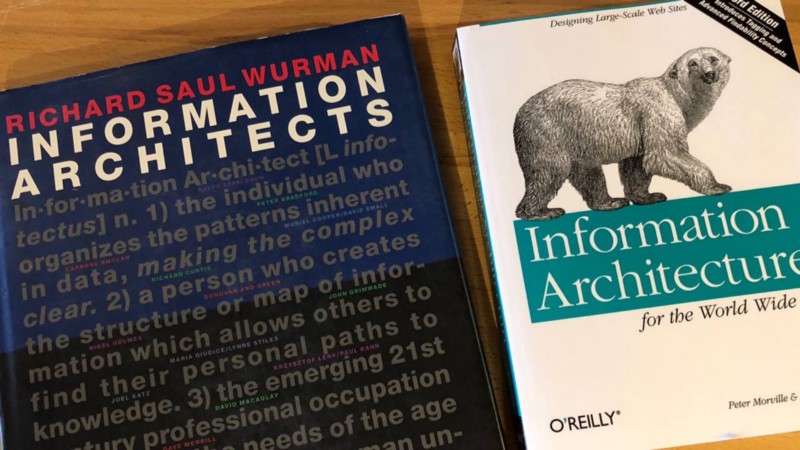
The Usability Experts
Then there were the usability experts like Jakob Nielsen, who may be credited with single-handedly maintaining the sanity of the early World Wide Web. That’s a bit hyperbolic, but Nielsen should be recognized as the authority in bringing the best practices of software user interface design to the Internet — and for reminding web designers and developers to value the practice of simplicity. While browsers and devices have changed over the past 20+ years, his 10 Usability Heuristics still hold a “ten commandments” level of relevance in the world of U.I. design.
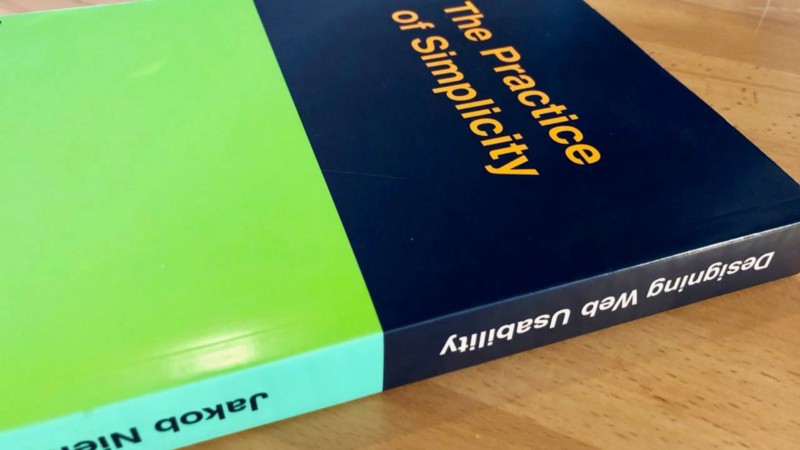
The Information Designers
A related discipline within the sphere of the Information Architecture and Usability is information design and data visualization. Wurman folded some examples of this work into his profiles of designers and communicators who are practicing Information Architecture, but the more recognized authority on this specific practice is Edward Tufte. Tufte’s equally iconic books’ titles say it all: Envisioning Information, Visual Explanations, Beautiful Evidence.
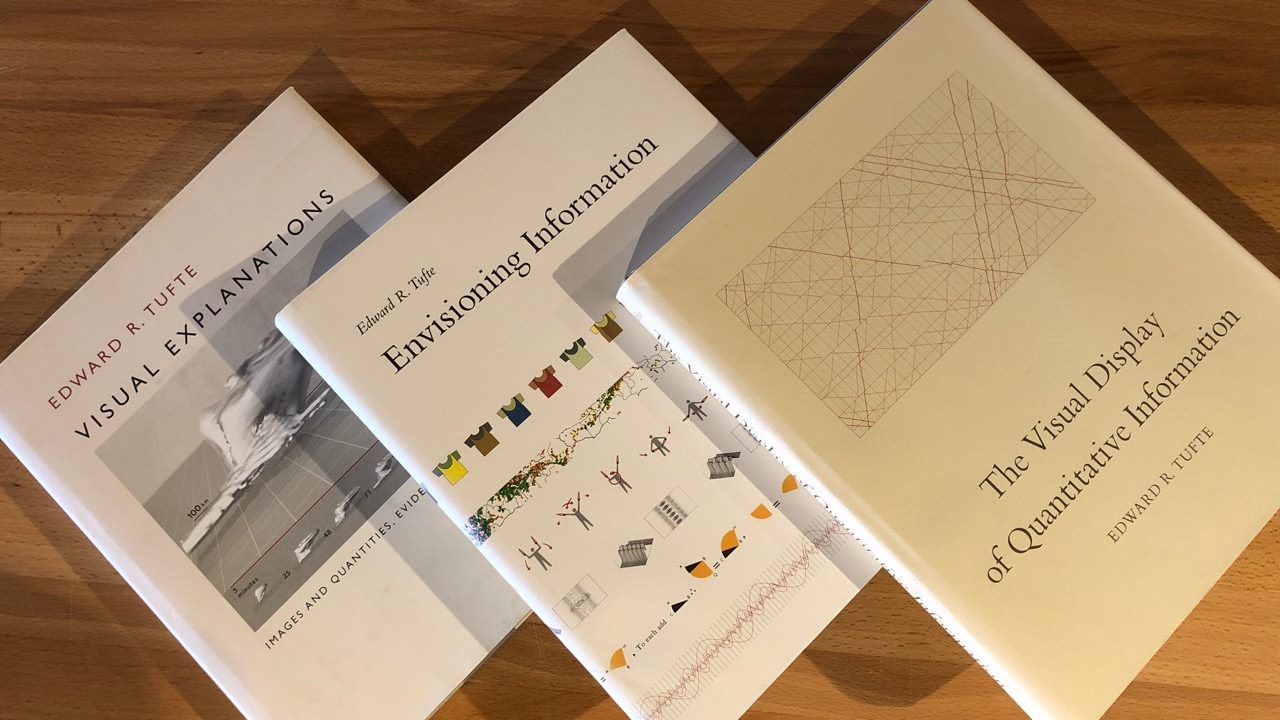
In these books, Tufte highlights what he considers to be extraordinary works of creating simple-to-understand visual representations of complex data and information. In his first book he identifies what he considers to be the “Citizen Kane” or “Sgt. Pepper’s” of genre: Charles Joseph Minard’s statistical graphic (created in 1861!) that tells the story of Napoleon’s march to Moscow by literally visualizing distance, direction, size and even temperature. (A poster of the Minard drawing has been proudly displayed on my office wall since before Elexicon was founded.)
When I studied these publications and their authors, I did not decide, “that’s what I want to do for a living.” The situation was rather the opposite: I already knew that being a visual communicator was what I wanted to do, and what I was becoming good at. Wurman’s “making the complex clear,” Nielsen’s “practice of simplicity,” Tufte’s “clear thinking made visual” — these men and their helped me identify the very best practices that I should follow when starting my interactive design agency.
(Quick story: When I sat down with my boss to tell him that I was resigning to start my own business, I explained my decision by showing him my Minard poster. I stated: “I want to start a business that does this,” assuming he’d understand that I wanted to create awesome visual design work that made complex data clear and easy to understand, and that I did not want to start a business to invade Russia.)
Leap taken. Agency named. Elexicon is born…
Everything comes together
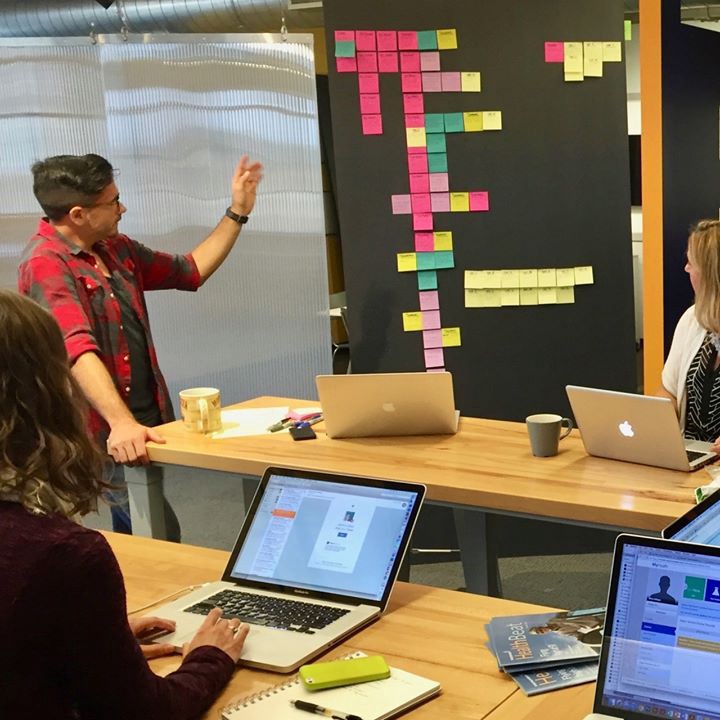
Let’s fast-forward 15 years, and return to our work on the “Start With Why” explorations. We reflected on my personal professional history, and then focused on the agency’s work and found rather obviously that the agency’s original D.N.A. remained strong. Our clients, team members and projects continued to add “strands” to that D.N.A.: I would hire like minds, we would create an excellent infographic or build an elegant information architecture, and those deliverables and capabilities would lead to similar projects. Looking back at our body of work, we seemingly had remained on the path we started down. But what was that path exactly? How would I describe it? If it was indeed the same path, if we remained true to our D.N.A. for that decade and a half … that could define our “Why.”
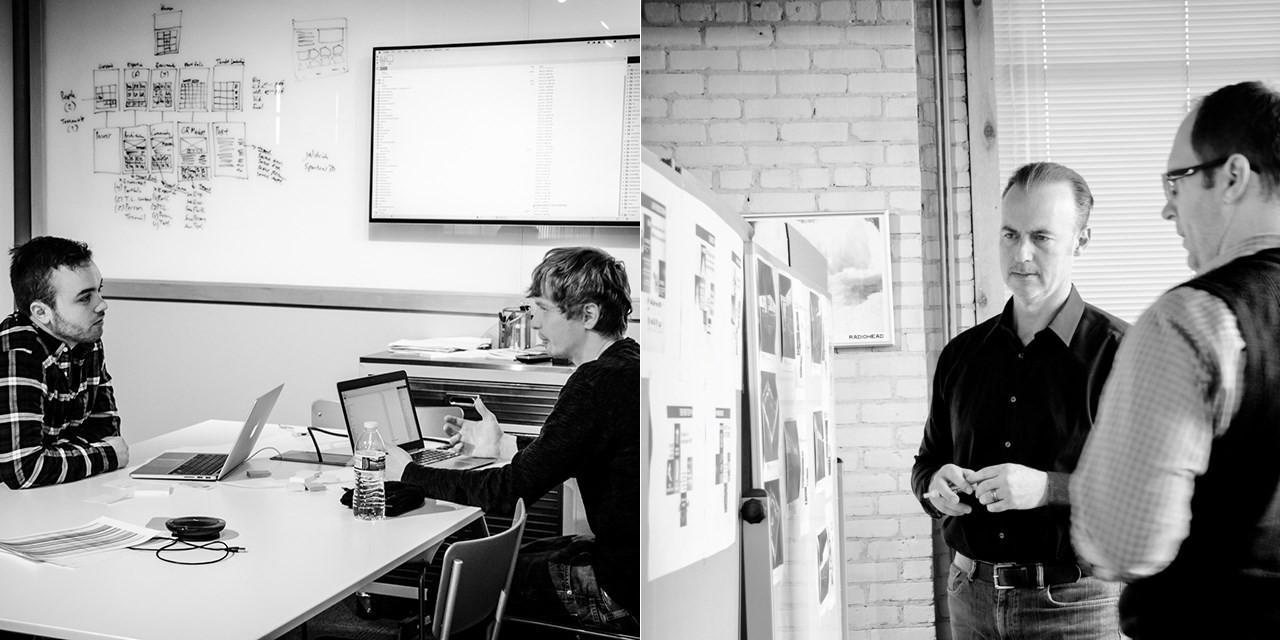
Building our Golden Circle off Sinek’s examples, we (like probably everyone) started with the “Apple Why” that has prominence in the YouTube video:
Why: “Everything we do, we believe in challenging the status quo. We believe in thinking differently.”
How: “The way we challenge the status quo is by making our products beautifully designed, simple to use, and user friendly.”
What: “We also happen to make great computers. Wanna buy one?”
To Elexicon, “we believe in making the complex clear by practicing the art and science of simplicity” was our “we believe in challenging the status quo.” Inject that with our copy writing style that follows that very mantra and: We Make Things Clear.
Why: Everything we do, we strive to Make Things Clear. To clarify the complex by practicing the art and science of simplicity.
How: We do this by prioritizing visual strategic planning, information architecture, and human usability into all the work we do: Planning, writing, creating, designing, developing and marketing.
What: We create usable structures, clear content, simple designs and beautiful code for web sites and apps; user-friendly interfaces for software; and engaging experiences for marketing and technical communications, including as infographics, data visualizations, and explainer videos. And we simplify our process through thoughtful planning, project management, measurement, and analytics.
In the spirit of the Elexicon brand, we had some fun with our own “golden hexagon” below. All our engagements and projects have a Why, a How and a What, but we always start with “clearly, beautifully, thoughtfully…” Whatever work and deliverables come after that are driven by the goal of making things clear.
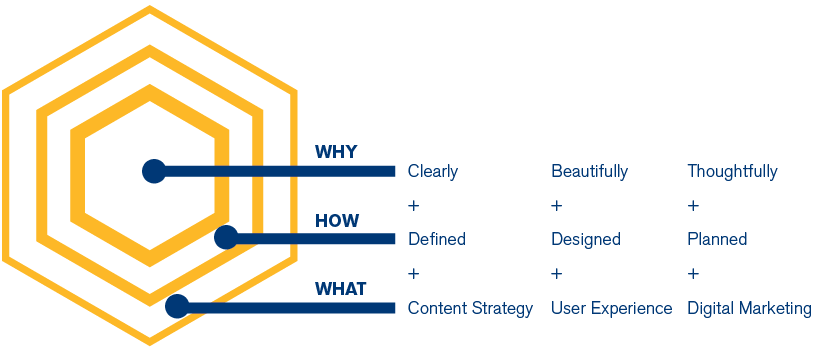
“Why” is product- and service-agnostic
Notice how interchangeable the “How” and the “What” are! We can swap out services and deliverables under the “Why” terms of Clearly and Beautifully and Thoughtfully, and the bullet points still work! As Sinek notes in the book and video, consumers will buy the next “thing” that Apple brings to market, not because of what it is, but because of Apple’s compelling and now-entrenched “Why.” His example there was, who would buy an MP3 player from Dell? Apple wasn’t just a computer company, but they were able to become a music and phone device company (among many other non-“computer” products) without anyone batting an eye.
Over the past 20 years, our core services and deliverables have remained similar, but they’ve gradually evolved as technologies have changed rapidly year after year. By always putting our “Why” front and center, we’ve been able to weather all those changes. We’ve never hung our hat on a specific type of creative deliverable, or specific development platform. Instead, we start with Making Things Clear and let that guide us toward the client’s goals, and the right strategies, tactics, deliverables and platforms. And Make Thing Clear has created a more natural and cohesive foundation for our agency culture.
What about you?
What passionate pursuit did you build your business around? What purpose have you instilled in your team that makes them jump out of bed in the morning and race into work? Some of you may know it for sure, and have your own “Why” statement. Others may just need to think about it a little more. In any case, Elexicon is an agency that can help you bring your “Why” (and your How and your What) to life through creative and digital communications.
You’ve heard the old adage, “To a hammer, everything looks like a nail.” That’s the “How” (the hammer) and “What” (the nail) taking the lead. Starting with your “Why” opens up the toolbox to more possibilities. Clients and teams don’t want to work with a “hammer and nail” company. Customers, employees and consumers are looking for a little sense of what you believe in, and maybe they can believe in it too.
If our particular brand of agency focus above fits with how you would like to differentiate and promote your products and services, connect with us.